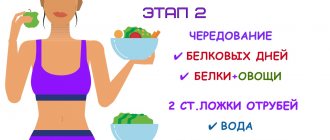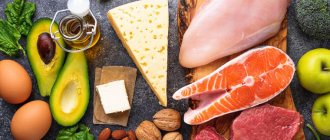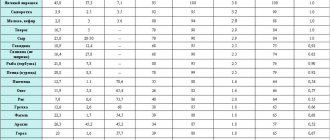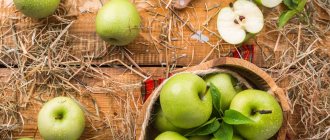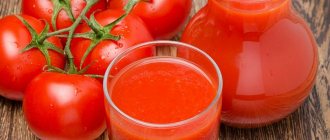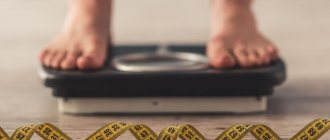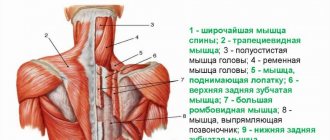A cholesterol-lowering or hypocholesterolemic diet is usually prescribed for medical purposes in order to significantly lower blood cholesterol levels. And as an addition, you can lose a few extra pounds. This diet was developed with the help of cardiologists, since increased cholesterol can lead to various cardiovascular diseases and atherosclerosis. The risk of developing a heart attack and coronary heart disease increases significantly. The fact is that hypercholesterolemia can also be a hereditary disease, and as a rule, a diet has been specially developed for such people that will help reduce the level of bad cholesterol in the blood.
The essence of the hypocholesterol diet
In fact, cholesterol is an important product that is produced in the liver and serves many vital functions of the body. But increasing its level can lead to adverse consequences: atherosclerotic plaques appear, which are deposited in the blood vessels, thereby causing blockage of the arteries. And that, in turn, already affects the appearance of other terrible cardiovascular diseases.
Content:
- The essence of the hypocholesterol diet
- Basic rules of the hypocholesterol diet
- Prohibited Products
- Authorized Products
- Menu for a week with a hypocholesterolemic diet
- Recipes for a hypocholesterol diet
- Contraindications and harms of a hypocholesterol diet
- Results of a hypocholesterol diet
- conclusions
Lately, the problem of high cholesterol has been a concern for many people, as modern life makes its own adjustments to people’s diet and lifestyle. Doctors attribute this primarily to the increased content of “bad” fats in our diet. But it’s true, not many people are able to pass by such delicious-smelling fast foods and fast food chains. And also with regular consumption of alcoholic beverages, smoking, excess weight, hereditary factors and, of course, a sedentary lifestyle.
At its core, the hypocholesterol diet is aimed at reducing the consumption of foods that contain high levels of cholesterol. There are immutable rules of this diet, the observance of which will not only normalize cholesterol levels in the body, but also lose excess weight and radically change your lifestyle, thereby helping to improve your overall well-being.
What is cholesterol
Cholesterol is a substance necessary for humans to build body cells (cell membranes). Cholesterol is involved in the formation of sex and adrenal hormones, bile acids, which are part of bile, which is involved in digestion (digestion of fats, control of vitamin D). Cholesterol carriers are protein-lipid complexes, low (harmful) and high (good) density lipoproteins and triglycerides, which are formed in the liver and enter the blood. The kidneys produce very low-density lipoproteins (VLDL) (bad cholesterol).
Basic rules of the hypocholesterol diet
In order for the results of a hypocholesterol diet to be pleasing, it is necessary to follow the basic rules, any violation of which will only worsen the general condition and will minimize all efforts.
Here is a list of these recommendations:
- avoidance of harmful animal fats, or reducing their consumption to a minimum;
- mandatory consumption of fish, except fried fish, about twice a week;
- replace fatty meat with more dietary meat: turkey, chicken, rabbit or veal;
- Alcoholic drinks are strictly prohibited;
- excluding flour and sweet foods from the diet, or reducing their consumption to a minimum;
- use of vegetable dishes, fruits and low-fat dairy products in the daily menu;
- using stewed or boiled food instead of fried;
- a categorical ban on the use of mayonnaise, replacing it with lemon juice and spices;
- Cool meat broth before use and skim off the top layer of fat;
- It is advisable to cook the bird without fat and skin.
Prohibited Products
Prohibited foods on a hypocholesterol diet include:
- various types of sausages, sausages, small sausages, smoked meats;
- fatty meats, offal, as well as duck or goose meat;
- egg yolks, heavy cream, sour cream and cottage cheese, condensed milk and processed cheese;
- butter, coconut, palm oil, lard, animal fats and hard margarine;
- canned fish and other preserves;
- various nuts (peanuts, pistachios, hazelnuts), chips, candied fruits and French fries;
- baked goods, biscuits, rolls, cakes and other confectionery products;
- all types of sugar, chocolate, sweets, as well as marshmallows and marmalade;
- alcohol, strong coffee with cream and cocoa.
Authorized Products
Allowed foods for high cholesterol include:
- all lean meats (veal, chicken, turkey, rabbit, as well as wild animal meat);
- You can only eat egg whites no more than 2 times a week;
- low-fat milk and fermented milk products, cheeses with no more than 20 percent fat content;
- vegetable oils (sunflower, corn, olive, soybean), soft margarine;
- sea fish (sardine, salmon, tuna, flounder, mackerel, cod and herring), as well as caviar and seafood about twice a week;
- various fresh or frozen vegetables, legumes, dried fruits and corn;
- whole grain bread, durum wheat pasta, oatmeal and oatmeal cookies, brown rice, low-fat puddings and sorbet;
- popsicles and frozen juice, various jellies and smoothies;
- sugar-free juices, various teas, weak coffee and mineral water.
What is hypercholesterolemia
Hypercholesterolemia – increased cholesterol levels and disturbances in its fractions in the blood, is a risk factor for the development of atherosclerosis and its complications.
20% of cholesterol enters the human body with food (exogenous cholesterol) when consuming fatty, rich foods, and disorders of fat metabolism (obesity). Although this percentage is small, it is necessary to adhere to a rational lipid-lowering diet. A diet for high cholesterol is simply necessary. It should be noted that complete exclusion of fat is undesirable; this leads to disorders of the liver, biliary system, and gallbladder function.
Menu for a week with a hypocholesterolemic diet
The menu for a week with high cholesterol levels should consist only of permitted foods, of which there are quite a lot, so creating a daily balanced diet will not require much effort.
Below is a sample menu based on which you can come up with your own meal plan.
Monday:
- breakfast - low-fat cottage cheese (150 grams), green or herbal tea, oatmeal;
- second breakfast - some berries or an apple;
- lunch - low-fat meat or vegetable soup, boiled chicken breast (100 grams), vegetable salad seasoned with a small amount of vegetable oil, a slice of rye black bread;
- afternoon snack - unsweetened yogurt or any fruit;
- dinner - two boiled egg whites, green beans with carrots (stewed or cooked in a double boiler).
Tuesday:
- breakfast - fruit salad, a glass of low-fat fermented milk product, a slice of whole grain bread;
- second breakfast - any fruit or fruit jelly without sugar;
- lunch - baked or steamed fish (150 grams), cabbage salad with carrots, seasoned with balsamic or soy sauce and a small amount of vegetable oil;
- afternoon snack - cheese with rye or whole grain bread and herbs;
- dinner - two stewed beef meatballs with stewed vegetables (peppers, cauliflower, carrots).
Wednesday:
- breakfast - buckwheat porridge and tomato or vegetable juice;
- second breakfast - baked apple with honey, black tea;
- lunch - pureed vegetable soup, a slice of bread with bran, salad with mushrooms (oyster mushrooms or champignons).
- afternoon snack - green tea and one marshmallow;
- dinner - stewed rabbit (250 grams) and Greek salad.
Thursday:
- breakfast - cheesecakes with fruit jam (4 pieces), apple and carrot salad with nuts, a glass of low-fat fermented milk product;
- second breakfast - rosehip decoction, dried fruits (5 prunes and the same amount of dried apricots);
- lunch - gazpacho, boiled veal (150 grams), a piece of gray or whole grain bread;
- afternoon snack - low-fat cottage cheese with raisins and unsweetened compote;
- dinner - durum wheat pasta and baked or steamed fish (150 grams).
Friday:
- breakfast - millet porridge with apple, rosehip decoction;
- second breakfast - any low-fat fermented milk product;
- lunch - seafood and olive salad, a glass of any unsweetened fruit juice;
- afternoon snack - some grapes;
- dinner - boiled beans with spices, tomato and cucumber salad, seasoned with a small amount of vegetable oil.
Saturday:
- breakfast - lazy dumplings, black or green tea;
- second breakfast - tomato with cheese;
- lunch - vegetable hash, a slice of bran or whole grain bread;
- afternoon snack - any two fruits;
- dinner - boiled potatoes, turkey, vegetable salad.
Sunday:
- breakfast - weak coffee with milk, oatmeal and one egg white;
- second breakfast - fruit jelly or fruit ice cream;
- lunch - low-fat chicken soup, boiled or baked veal (100 grams), radish salad;
- afternoon snack - orange or unsweetened yogurt;
- dinner - risotto with mushrooms or spaghetti in tomato sauce, boiled beet salad.
Diet for cardiovascular diseases
1. Rational therapeutic nutrition (anti-atherosclerotic diet) and normalization of body weight Increased levels of cholesterol in the blood plasma and disturbances in the system of lipoproteins transporting it (atherogenic dyslipoproteinemia) play a leading role in the appearance and progression of atherosclerosis. Rational therapeutic nutrition (anti-atherosclerotic diet) is of great importance in the complex therapy of atherosclerosis, as it allows one to normalize impaired lipid metabolism or at least reduce the phenomena of atherogenic dyslipoproteinemia. 2. Basic principles of dietary therapy for atherosclerosis A group of experts from the European Society for the Study of Atherosclerosis (1987) formulated 7 “golden” diet rules , the observance of which is necessary to eliminate lipoprotein metabolism disorders: 1. Reduce total fat intake. 2. Drastically reduce the consumption of saturated fatty acids (animal fats, butter, cream, eggs), because they contribute to hyperlipidemia. 3. Increase the consumption of foods enriched with polyunsaturated fatty acids (liquid vegetable oils, fish, poultry, seafood), because they lower blood lipid levels. 4. Increase your intake of fiber and complex carbohydrates (vegetables, fruits). The amount of fiber in the diet is 35 mg/day. 5. Replace butter with vegetable oil when cooking. 6. Drastically reduce the consumption of foods rich in cholesterol. 7. Limit the amount of table salt in food (up to 3-5 g per day). General characteristics of the diet: normal protein content, limitation of fat (mainly animal), carbohydrates (mostly simple), table salt (up to 3-5 g per day), enrichment with polyunsaturated fatty acids from vegetable fat, dietary fiber and lipotropic substances, limitation of cholesterol. Recommended dishes and products Bread – wheat from grade II flour, grain, with bran, peeled, rye Vegetarian soups – vegetable, dairy, fruit, cereal, cabbage soup, beetroot soup Meat and poultry – lean varieties of beef, pork, chicken, turkey, rabbit in boiled or baked after steaming, in pieces or chopped Fish - low-fat varieties, boiled or baked after steaming Milk and dairy products - boiled milk, fermented milk products, low-fat cottage cheese and dishes made from it, limited sour cream (only for dressing dishes) Eggs - 1 an egg a day in the form of a protein omelet Cereals and pasta - porridge with water and milk, crumbly and viscous, puddings, cereals, pasta casseroles Vegetables - any raw, boiled and baked Fruits and berries - ripe, sweet varieties in their natural form, jelly , mousses, compotes, grape juice is excluded Drinks - weak tea, coffee (with milk), rosehip decoction, diluted natural juices; Fats - refractory fats are excluded, 1/3 or 2/3 of the total amount of fat in the diet comes from vegetable oil. The following are prohibited: strong meat, fish, chicken and mushroom broths; pickles: smoked; lamb, pork fat, radish, radishes, legumes, butter dough, salted fish, canned food. Limit: sweets (sugar 30 g per day), caviar, fatty pork, lamb, salami. About the cholesterol content in the diet Cholesterol is a structural element of all cell membranes, a precursor for the synthesis of bile acids and steroid hormones. For these needs, cholesterol is synthesized in the body itself and in sufficient quantities. With excess cholesterol intake from food, the feedback mechanism is disrupted, and the concentration of cholesterol in the blood increases. The anti-atherosclerotic diet provides for limiting the cholesterol content to 300-200 mg and even 150 mg per day. Cholesterol enters the body with products of animal origin. The following foods are rich in cholesterol: brains, kidneys, liver, egg yolk (in one yolk - 250 mg), butter, pork and lamb fat, fatty meat, etc. It is calculated that on average every 100 mg of dietary cholesterol increases its concentration in the blood by 10 mg/dl. The patient should count the amount of cholesterol taken with food during the day. Diet therapy for atherosclerosis and atherogenic dielnpoproteinemia is carried out in two stages using two types of lipid-lowering diet (type I - less strict, type II - more strict diet). Diet options differ mainly in the degree to which they limit saturated fat and dietary cholesterol while maintaining the same total amounts of fat, protein, and carbohydrates. In a Type I diet, the proportion of saturated fat should be less than 10% of calories. The optimal ratio of saturated, mono- and polyunsaturated fatty acids is 1:1:1; dietary cholesterol should not exceed 300 mg per day. In a type II diet, with the same total amount of fat, a more strict restriction of saturated fats (less than 7% of the calorie intake) and an excess of PUFAs over SFAs are provided. The cholesterol content in the daily diet should not exceed 200 mg. For example, the number of grams of fat in a daily diet, in which fats make up 30% of the daily caloric intake, can be calculated as follows: 1) first calculate the number of kilocalories that will be provided by the amount of fat taken during the day: KcalF = 30% of the daily caloric intake 2) quantity fat (g) in the daily diet is determined by dividing the value obtained above by 9 (1 g of fat gives 9 kcal). In a simplified form, the formula for determining the amount of fat (g) in the daily diet can be presented as follows: amount of fat (g/day) = daily calories (kcal) x 30/900, while the proportion of saturated, polyunsaturated and monosaturated fats in the daily amount of fat will be 10% each. Diet therapy for hypercholesterolemia The first stage of diet therapy for hypercholesterolemia involves prescribing a type I diet, which involves reducing fat in the diet to such a level that it accounts for less than 30% of calories, while the daily amount of saturated fat should provide no more than 10% of calories. Cholesterol intake per day should be no more than 300 mg. Practical recommendations for creating a type I lipid-lowering diet 1. Saturated fat intake can be reduced by reducing the daily intake of beef, pork, chicken and fish to 85 g and limiting meat dishes to 170 g. Beef and pork should be lean, and chicken and turkey should be lean. without skin. Meat products should be consumed boiled. Dairy products are consumed only low-fat. Instead of butter, sour cream, solid vegetable fats, and fatty cheeses, you should use soft margarine and liquid vegetable oils. The intake of saturated fats from food into the patient’s body is not vital, since the body itself is capable of synthesizing them, but they are contained in products that contain substances necessary for humans - proteins, iron. When consuming food rich in saturated fatty acids, the level of total cholesterol in the blood increases, which is associated with the suppression of the activity of low-density lipoprotein receptors, which are involved in removing 70% of very low-density and low-density lipoproteins from plasma. Limiting the consumption of saturated fatty acids reduces saturated fatty acids by 2 times more effectively. blood cholesterol concentration than increasing the consumption of polyunsaturated fatty acids. The average amount of saturated fatty acids in a type I hypocholesterolemic diet is about 29 g. 2. Monosaturated fatty acids should be consumed in such quantities as to provide 10-15% of the total calorie content of food. Monosaturated fatty acids, the main representative of which is oleic acid, are found in large quantities in olive, peanut, sunflower, and corn oils. Monosaturated fatty acids promote the catabolism of low-density lipoproteins and lower blood cholesterol levels. A type I hypocholesterolemic diet contains about 29 g of oleic acid. This amount can be obtained by taking 3 tbsp per day. l. olive oil or the following set of products: 2 tbsp. l. sunflower oil, 250 g fish. 100 g lean beef. 3. Polyunsaturated fatty acids (PUFAs) help reduce blood cholesterol, but it is believed that the concentration of high-density lipoprotein cholesterol is reduced to almost the same extent, which is undesirable. Therefore, polyunsaturated fatty acids should be consumed in such quantities that their calorie content is 10% of the total calorie content of food. PUFAs are mostly irreplaceable (essential) and are not synthesized in the human body. Actually, linoleic acid is irreplaceable; it enters the body only with food. PUFAs are found in vegetable oil (sunflower, corn, cottonseed) and margarine. It is not recommended to consume very large amounts of PUFAs (more than 10% of the calorie intake), since vegetable oils, like other fats, are high in calories and taken in large quantities contribute to weight gain, the development of cholelithiasis, and a decrease in HDL cholesterol levels. The average amount of PUFA obtained from a lipid-lowering diet I is about 26-29 g per day. This amount is contained in 2 tbsp. l. sunflower oil and 250 g of fish. 4. Cholesterol intake can be reduced by reducing the consumption of egg yolks, liver, kidneys, and other cholesterol-containing foods. 5. Carbohydrates should account for 55-60% of total calories. Your diet should include fresh vegetables, fruits and whole grains. The amount of easily digestible carbohydrates (sugar, semolina, rice cereal, candy, ice cream, etc.) must be limited to 7-10% of the calorie intake. Complex carbohydrates found in fruits and vegetables should account for more than 50% of all carbohydrates in the diet. This will provide the body with a sufficient amount of vitamins, microelements, vegetable protein, and fiber. The effect of fiber on blood cholesterol levels depends on its type, physical properties, and chemical structure. There are water-soluble and water-insoluble fiber. Water-insoluble fiber (cellulose, lignin, most hemicelluloses) does not artificially affect blood lipid levels. Water-soluble fiber (pectin, gluten) reduces blood cholesterol levels by 15% or more. Products rich in pectin: Black currants Beetroot Apples Plums Oranges Carrots Cabbage Water-soluble fiber has a significant effect on blood cholesterol levels. Products rich in water-soluble fiber Oat bran Oat flour Dry beans, peas, beans Oatmeal Hercules oat flakes Adding 50 g of oat bran or 100 g of beans to the usual diet in people with hypercholesterolemia leads to a decrease in cholesterol concentrations in just 3 weeks plasma by 19% with a virtually unchanged level of high-density lipoprotein cholesterol. Water-soluble fiber reduces cholesterol in the blood in the following ways: helps reduce the absorption of cholesterol in the intestines; increases the excretion of bile acids in feces, which promotes cholesterol catabolism. You need to consume about 15 g of water-soluble fiber per day. The second stage of diet therapy for hypercholesterolemia is carried out by using a type II hypocholesterolemic diet. This diet is prescribed to the patient when there is no reduction in blood cholesterol when following a type I hypocholesterolemic diet for 6-12 weeks. Hypocholesterolemic diet type II provides for a further reduction in the content of saturated fats in food to 10% of the total calorie content of food, cholesterol to 200 mg/day. Typically, the content of saturated fatty acids in a type II diet does not exceed 20 g per day. The rest of the recommendations are the same as at the first stage of diet therapy. The duration of diet therapy in most cases should be at least 6 months. If there is no reduction in blood cholesterol levels after 6 months of diet therapy, they switch to drug therapy for atherogenic dyslipidmia. Use of marine fish oil There is a direct relationship between the dietary consumption of marine fish, fish oil rich in polyunsaturated fatty acids of the ω-3 class (eicoopentaenoic and docosohexaenoic), and a decrease in morbidity and mortality from coronary artery disease. This is due to the normalization of lipid metabolism, a decrease in platelet aggregation and blood viscosity when treated with marine fish oil: ω-3-polyunsaturated fatty acids reduce the blood levels of triglycerides and very low-density lipoprotein cholesterol (pre-β-LP), as well as cholesterol and β -LP; Along with this, an increase in the level of high-density lipoproteins in the blood is possible; eicosapentaenoic acid from marine fish oil inhibits the cycloxygenase pathway of arachidonic acid metabolism, resulting in a decrease in the production of prostaglandin thromboxane, which promotes platelet aggregation, and an increase in the synthesis of prostaglandin prostacyclin, which has a vasodilator and antiplatelet effect; as a result, platelet aggregation decreases; The activity of the endothelial relaxing factor increases, which also leads to a decrease in platelet aggregation. Marine fish oil for the treatment of hyperlipidemia is obtained from fish carcasses, in contrast to “fish” oil obtained from cod liver. In terms of their therapeutic effect, these two types of fat are different and do not replace each other. The diet of a patient with atherosclerosis should include marine fish oil in the form of a new food product “edible ichthyene oil” and in the form of the drug eikanol. Ichthyene edible oil is a concentrated marine fish oil containing at least 18% PUFA of the ω-3 group (eicosapentaenoic and docosohexasic acids), and is used in a daily dose of 30 ml (this amount contains 8 g of PUFA of the ω-3 group). If there are positive dynamics of lipid metabolism after 3-4 months of treatment, as well as if side effects occur, the dose is reduced to 15 ml per day. Treatment can be continued for 4-6 months and even 1 year. Under the influence of edible ichthyene oil, the content of total cholesterol, low- and very low-density lipoprotein cholesterol, and triglycerides decreases and the level of anti-atherogenic high-density lipoprotein cholesterol increases. The use of ichthyene oil for 1 year does not cause changes in the functional state of the liver. After 4 months of continuous treatment with ichthyene oil, the frequency of angina attacks decreases and the duration of free walking increases in patients with obliterating atherosclerosis of the arteries of the lower extremities. Side effects in the form of exacerbation of chronic diseases of the gastrointestinal tract (chronic gastritis, cholecystitis, gastric ulcer, duodenal ulcer, chronic pancreatitis) can occur in 12% of patients. In this case, treatment should be stopped. Eikanol is available in capsules and contains marine fish oil, rich in PUFAs, as well as vitamins A, E, D. Prescribed 2 capsules 4 times a day. This daily dose contains 2.13 g of EPA. Treatment continues for 2-3 months, repeated courses are possible throughout the year. In the absence of eikanol and ichthyene oil, the patient can obtain EPA by eating fish and other seafood. The content of eicosapentaenoic acid in the daily diet should be 2-3 g. When carrying out diet therapy, it is advisable to take into account the type of hyperlipoproteinemia. Characteristics of types of hyperlipoproteinemia II-A hyperlipoproteinemia is characterized by high levels of LDL and cholesterol in the blood. With type II-A, the patient’s diet should contain a minimum amount of cholesterol (less than 300 mg per day, and if a hypocholesterolemic diet is ineffective - 250 mg and even 200 mg per day), the amount of cholesterol should be 30% of the total calories, the proportion of saturated fats is reduced. and the proportion of unsaturated fats increases. The amount of proteins and carbohydrates corresponds to the physiological norm, if the patient is not obese. Type II-B hyperlipoproteinemia is characterized by increased levels of LDL and VLDL in the blood, and consequently, high levels of cholesterol and triglycerides in the blood. Diet therapy for type II-B is carried out in the same way as for type II-A, but the amount of carbohydrates in the diet should not exceed 5 g per 1 kg of body weight. Type III is characterized by an increase in the blood level of lipoproteins with a high cholesterol content - lipoprotsins of intermediate density, high levels of cholesterol and triglycerides in the blood. The diet for type III hyperlipoproteinemia differs little from the diet for type II-A and II-B hyperlipoproteinemia. Particular attention is paid to normalizing body weight, as this helps reduce the level of triglycerides and cholesterol in the blood. Due to low tolerance to carbohydrates, it is necessary to limit their consumption to 4 g per 1 kg of body weight due to easily absorbed ones (sugar, honey, jam, etc.). Type IV hyperlipoprossinemia is characterized by high levels of VLDL and triglycerides in the blood. In the diet, it is necessary first of all to limit the amount of carbohydrates to 4 g per 1 kg of body weight, since excess carbohydrates contributes to hypertriglyceridmia. The amount of cholesterol is 300 mg per day. The consumption of saturated fats is limited, preference will be given to unsaturated fats. Persons with atherogenic dyslipoproteinemia and an excess body weight need to normalize body weight, since this helps to normalize lipid metabolism disorders. 3. Therapeutic nutrition is the most pathogenetically substantiated for hypertension is the hyponatrium diet No. 10g. The basic principles of therapeutic nutrition for hypertension are: strict compliance of the energy value of the diet of the energy costs of the body, and with concomitant obesity - the limitation of daily calorie content; antiaterosclerotic orientation of the diet and enrichment of seicozopentenic acid, reducing platelet aggregation; a decrease in the use of free fluid to 1-1.5 liters per day; the exclusion of products exciting the central nervous and cardiovascular systems (strong meat and fish broths, strong tea, coffee), causing enhanced gas formation, intestinal bloating (beans, peas, carbonated drinks, etc.); Reducing the content of table salt. High salt consumption (more than 14-15 g per day) causes an increase in blood pressure, while very low (less than 1 g per day) significantly reduces blood pressure. With a moderate realistic restriction of sodium chloride from 3.5 to 2 g per day, blood pressure is reduced in order to restrict the use of table salt should be abandoned to suck food and the use of products that hold a lot of salt (herring, smoked meats, fish canned cucumbers, and salted cucumbers, etc. .). At the same time, it should be noted that in order to avoid hypochloremia, salt consumption should be at least 2 g per day. Instead of salt, write a sanasol, which tastes sodium salt, but does not contain sodium. 100 g of sanasol contain 60 g of potassium chloride, 10 g of ammonium chloride, 10 g of calcium gluconate, 5 g of magnesium asparaginate, 10 g of potassium citrate and 5 g of glutamic acid. The amount of sanasol, recommended for a day, is from 1.5 to 3 g. A decrease in consumption with food of saturated fats and enrichment of the diet with unsaturated fats, which contributes to a moderate decrease in blood pressure; enrichment of the diet with products containing magnesium and potassium, since they are faster from the body against the background of a hyponatrium diet; inclusion in the diet of foods rich in lipotropic substances and cell membranes, as well as sea products (sea fish, crabs, lobsters, shrimp, seaweed); Periodic alternation of the hyponatrium diet No. 10g with a magnesium diet, which is prescribed in the form of 3 diets of 3-4 days each. For the treatment of patients with hypertension, a magnesium diet is also used, including products rich in magnesium. Such a diet contributes to the normalization of vascular tone, blood pressure, increase diuresis, reduce cholesterol. The products rich in magnesium include: beans, peas, soy, green peas, raisins, figs, dates, rose hips, wheat, rye, corn, dried apricots, oatmeal and buckwheat, crump of coarse -grinding, nuts. In the clinic of the medical nutrition of the AIR nutrition Institute, three versions of the magnesium diet have been developed, each diet is prescribed for 3-5 days due to their inferior chemical composition. The daily need of a healthy person in magnesium is 400 mg. The diet of a patient with hypertension should also contain potassium. The diet includes products rich in potassium salts, but with a low sodium salts, so that the ratio of potassium and sodium is at least 8: 1 and no more than 14: 1. Increased administration of potassium salts has a diuretic effect, helps to remove sodium, reduce blood pressure. To enrich the diet with potassium, dried apricots, raisins, nuts, prunes, oranges, tangerines, cabbage, rose hips, lean meat, potatoes (baked, fried), barley, oatmeal, millet cereals, gooseberries, blackcurrant, tomato and orange orange, milk, milk, milk, milk cottage cheese. With a combination of hypertension with severe atherosclerosis of the aorta, cerebral and peripheral arteries, an anti -atherosclerotic diet is prescribed. With severe arterial hypertension, you can recommend a Kempner diet or a rice-compartment diet for a short time (3-4 days). It consists of rice porridge, cooked on water and without salt, and compote, which is given 6 times in laziness for 1 glass. Twice a day, along with compote, they give rice porridge. A set of products per day consists of 50 g of rice, 100 g of sugar and 1.5 kg of fresh or 240 g of dried fruits. The amount of liquid is up to 1.5 liters per day. The rice-compartment diet contains 10 g of protein, 0.4 g of fat and 308 g of carbohydrates of its energy value is 1276 kcal. Kempner Diyaz is most appropriate in a combination of hypertension and obesity. A decrease in blood pressure is observed already on the first day of the use of a diet, the maximum decrease is the 2-4th day. Normalization of body weight decrease in body weight in people suffering from obesity can lead to normalization of blood pressure with soft arterial hypertension. With a moderate and pronounced increase in blood pressure in people with obesity, normalization of body weight increases the effectiveness of drug hypotension therapy, reduces the hypertrophy of the left ventricle. You can also recommend a fruit and vegetable diet (1-2 times a week). The total number of vegetables can be brought to 1,500 g per day, bread is baked from coarse flour. The chemical composition of the fruit and vegetable diet, proteins-40 g, fats-80 g. Carbohydrates-200 g, energy value-1710 kcal. Patients with overweight are also shown to unloading days (1-2 per week): apple (1.5 kg of raw or baked apples for the whole day); cucumber (1.5 kg of fresh cucumbers for the day); watermelon (1.5 kg of watermelon pulp); kefir (1.2l kefir per day); salad (1.2-1.5 kg of fresh vegetables and fruits per day with the addition of sour cream or vegetable oil); fruit or vegetable juices (600 ml of juice to 200 ml of oxen per day); Curd (500 g of cottage cheese and 30 g of sugar per day). It should be emphasized that the basic principle of reducing body weight is a decrease in energy consumption (i.e. the energy value of the diet) and an increase in physical activity. The restriction of alcohol consumption and the cessation of smoking alcohol consumption should be reduced.
In large quantities, alcohol has a direct vasopressor effect. A decrease in alcohol intake to the amount equivalent to 30 ml of pure alcohol per day is accompanied by a decrease in blood pressure in patients with arterial hypertension. Smoking is considered a risk factor for the development of arterial hypertension. In smokers suffering from arterial hypertension, the risk of emergency IBS is 50-60% higher than in non-smokers, therefore it is necessary to persistently achieve the cessation of smoking by patients section: SSC diseases
Recipes for a hypocholesterol diet
It is quite easy to diversify the menu during a hypocholesterol diet, since there are quite a lot of foods that are allowed to be consumed. For daily use, such popular dishes as: okroshka, only instead of sausage you can cut boiled chicken fillet or lean veal, vegetable stew with rabbit, risotto with mushrooms and vegetables, cheesecakes, seafood salad, gazpacho, pilaf with dried apricots and prunes and much more. other delicious dishes.
Syrniki
To prepare such a tasty and healthy dish you will need:
- low-fat cottage cheese - 300 grams;
- semolina - 2 tablespoons;
- flour - 4 tablespoons;
- egg white - 2 pieces;
- soda - 1 teaspoon.
Beat the whites with a small amount of sugar, add grated cottage cheese. Then add flour, soda and semolina to the mixture and stir until a homogeneous consistency is obtained. Spoon the resulting mixture onto a baking sheet lined with foil or parchment and cook in the oven at 180 degrees for 15 minutes.
Gazpacho
Gazpacho is a cold Spanish soup made from pureed raw vegetables. To prepare it you will need:
- large fleshy tomatoes - 3 pieces;
- cucumber - 1 piece;
- sweet bell pepper - 1 piece;
- white bread - 1 slice;
- garlic - 2 cloves;
- olive oil - 1 tablespoon;
- salt;
- spices;
- ice.
Place the tomatoes in boiling water for a few seconds to make it easier to remove the skin. Soak the bread in warm water. Peel the vegetables and place in a blender along with the bread. Grind everything until you obtain a homogeneous puree-like consistency. Place on plates, add olive oil and herbs. In summer, it is recommended to add a little ice to this soup.
Sweet pilaf
To prepare such an easy and tasty dish you will need:
- brown rice - 250 grams;
- dried apricots - 200 grams;
- carrots - 1 piece;
- prunes - 100 grams;
- apple - 1 piece.
Rice must be boiled before cooking. Cut the apple, carrots and dried fruits into small strips. It is advisable to pre-soak dried fruits for a few minutes. In a cauldron, fry chopped dried fruits, carrots and apples, add boiled rice, stir. Add water and simmer until it evaporates completely.
Results of a hypocholesterol diet
Best materials of the month
- Coronaviruses: SARS-CoV-2 (COVID-19)
- Antibiotics for the prevention and treatment of COVID-19: how effective are they?
- The most common "office" diseases
- Does vodka kill coronavirus?
- How to stay alive on our roads?
This diet helps to significantly reduce and normalize cholesterol levels in the blood, and also helps improve the condition of blood vessels and the liver. But in order to completely normalize cholesterol levels, diet alone is not enough. It is recommended to take medications prescribed by a doctor, so before “settling” on such a diet, you should consult a cardiologist and nutritionist. The diet is very well balanced, so it can be used throughout life. Thus, having tried this method once and convinced of its effectiveness, you can make such nutrition a way of life. And as a positive addition to such a diet, there will be weight loss and maintaining it at normal levels for quite a long time. In addition to the low-cholesterol diet, it is very good to introduce sports into your daily routine and get rid of bad habits, such as smoking and alcohol. And then you will feel how much your life has changed for the better.
Basic principles of the diet
The hypocholesterol diet is based on treatment table No. 10. Its main principles and goals:
- Reducing the overall energy intensity of the diet by reducing the consumption of calories, fat, fiber and salt.
- Reducing the load on organs and systems suffering from malnutrition (liver, kidneys, cardiovascular and nervous systems).
- An increase in the diet of foods rich in nutrients necessary for the normalization of metabolic processes - potassium, magnesium, lipotropic substances.
- Increasing the amount of foods that have an alkalizing effect - milk, fruits and vegetables.
For a low-cholesterol diet to produce results, it is not enough to eat the right foods and avoid the wrong ones. There are nutritional rules that allow the treatment regimen to work:
- Meals should be regular, portions should be small (optimally - eat 5 times a day).
- Portions should be the same size. Size – 200 – 300 gr.
- Methods of preparing dishes should be selected so as not to ultimately overload the gastrointestinal tract. Stewing, boiling, and steaming are suitable.
- The temperature of the dish should be medium, comfortable for consumption.
- It is recommended to consume vitamins such as omega 3 and 6, vitamin E and C, nicotinic and folic acid, and B vitamins. They help reduce cholesterol.
Duration
A low-cholesterol diet and its menu are necessary to normalize blood levels and improve well-being. The duration of therapeutic nutrition does not have strict deadlines. The main indicator of effectiveness is test results, reduction in high blood pressure, and improvement in general condition. The purpose of the diet is determined by the attending physician. As a rule, such a diet is followed for at least a month. The decision to extend or terminate it is made by a specialist.
If after a long period of proper nutrition a positive result is not achieved, then medications may be prescribed to lower blood cholesterol levels.
